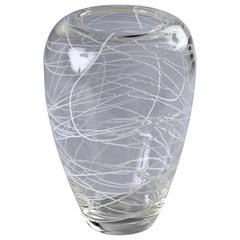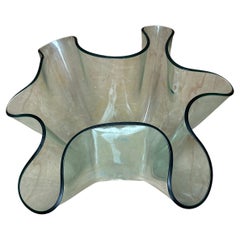Art Glass Planters, Cachepots and Jardinières
Mid-20th Century Italian Mid-Century Modern Art Glass Planters, Cachepots and Jardinières
Glass, Art Glass, Blown Glass, Murano Glass
1980s Italian Mid-Century Modern Vintage Art Glass Planters, Cachepots and Jardinières
Art Glass, Murano Glass
Mid-20th Century Italian Mid-Century Modern Art Glass Planters, Cachepots and Jardinières
Glass, Art Glass, Blown Glass, Murano Glass
Late 20th Century Italian Mid-Century Modern Art Glass Planters, Cachepots and Jardinières
Art Glass, Murano Glass
1970s Vintage Art Glass Planters, Cachepots and Jardinières
Art Glass, Murano Glass
1970s Italian Mid-Century Modern Vintage Art Glass Planters, Cachepots and Jardinières
Art Glass, Murano Glass
1930s French Art Nouveau Vintage Art Glass Planters, Cachepots and Jardinières
Spelter
1930s Dutch Art Deco Vintage Art Glass Planters, Cachepots and Jardinières
Art Glass
1980s Japanese Mid-Century Modern Vintage Art Glass Planters, Cachepots and Jardinières
Ceramic, Art Glass
1930s Belgian Art Deco Vintage Art Glass Planters, Cachepots and Jardinières
Art Glass
Mid-20th Century Italian Mid-Century Modern Art Glass Planters, Cachepots and Jardinières
Art Glass, Murano Glass
1980s Japanese Mid-Century Modern Vintage Art Glass Planters, Cachepots and Jardinières
Ceramic, Art Glass
1980s Japanese Mid-Century Modern Vintage Art Glass Planters, Cachepots and Jardinières
Art Glass, Ceramic
1980s Japanese Mid-Century Modern Vintage Art Glass Planters, Cachepots and Jardinières
Art Glass, Ceramic
1980s Japanese Mid-Century Modern Vintage Art Glass Planters, Cachepots and Jardinières
Ceramic, Art Glass
Late 20th Century Belgian Art Glass Planters, Cachepots and Jardinières
Art Glass
1980s Japanese Mid-Century Modern Vintage Art Glass Planters, Cachepots and Jardinières
Art Glass, Wood
1980s Japanese Mid-Century Modern Vintage Art Glass Planters, Cachepots and Jardinières
Art Glass, Wood
1930s Belgian Art Deco Vintage Art Glass Planters, Cachepots and Jardinières
Art Glass
Mid-20th Century Italian Mid-Century Modern Art Glass Planters, Cachepots and Jardinières
Art Glass, Murano Glass
1930s American Vintage Art Glass Planters, Cachepots and Jardinières
Art Glass
Early 20th Century Italian Mid-Century Modern Art Glass Planters, Cachepots and Jardinières
Art Glass, Murano Glass, Murrine
1980s Italian Modern Vintage Art Glass Planters, Cachepots and Jardinières
Glass, Art Glass, Blown Glass, Cut Glass, Murano Glass
Mid-20th Century Italian Mid-Century Modern Art Glass Planters, Cachepots and Jardinières
Gold Leaf
1980s Italian Art Deco Vintage Art Glass Planters, Cachepots and Jardinières
Murano Glass, Glass, Art Glass, Blown Glass, Cut Glass
1990s Italian Mid-Century Modern Art Glass Planters, Cachepots and Jardinières
Art Glass, Blown Glass, Murano Glass
Late 20th Century Italian Modern Art Glass Planters, Cachepots and Jardinières
Wrought Iron
1990s Italian Mid-Century Modern Art Glass Planters, Cachepots and Jardinières
Art Glass, Blown Glass, Murano Glass
1930s Belgian Art Deco Vintage Art Glass Planters, Cachepots and Jardinières
Art Glass
Mid-20th Century Italian Mid-Century Modern Art Glass Planters, Cachepots and Jardinières
Art Glass
1930s French Art Deco Vintage Art Glass Planters, Cachepots and Jardinières
Art Glass
Mid-20th Century Italian Art Deco Art Glass Planters, Cachepots and Jardinières
Art Glass
1980s Italian Mid-Century Modern Vintage Art Glass Planters, Cachepots and Jardinières
Brass
Read More
8 Ways to Breathe New Life into a Space with Plants
The pair behind the Instagram account @houseplantclub share their tips for making any room of the house gloriously green.
10 On-Point Vessels for Flaunting Your Houseplants and Bouquets
Whether you're a genius gardener or have your florist on speed dial, every stem in your home deserves the best.
How to Decorate with Plants
The vegetation in these six living rooms is lush yet discreet enough that they won't be mistaken for greenhouses.


